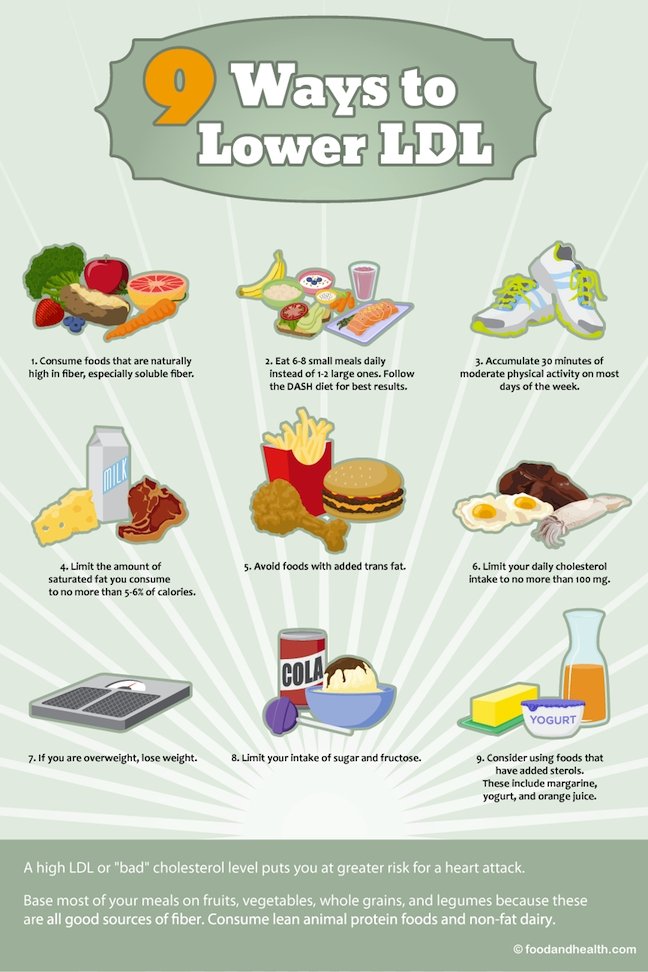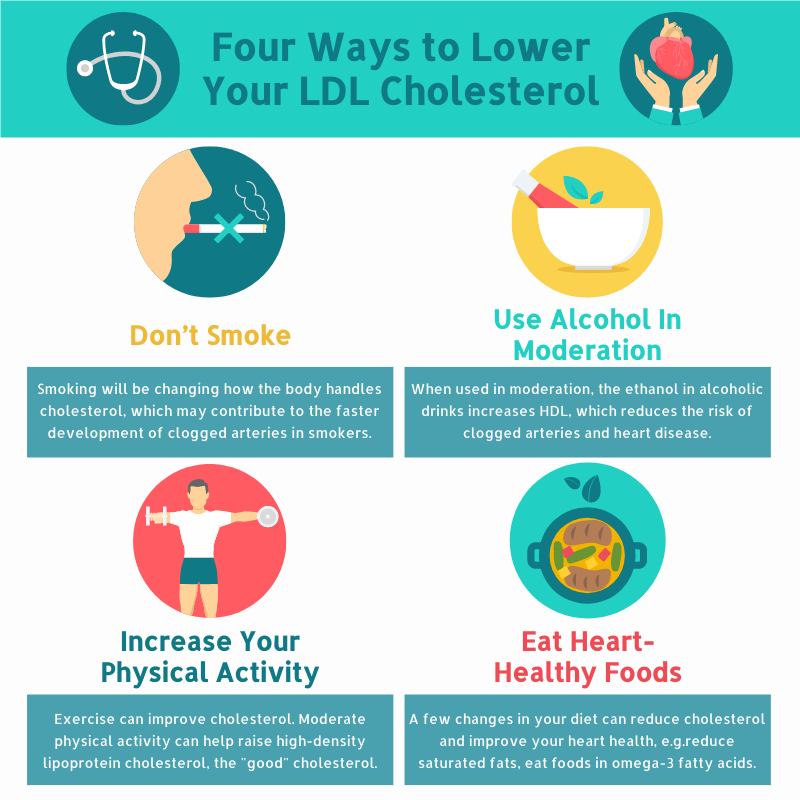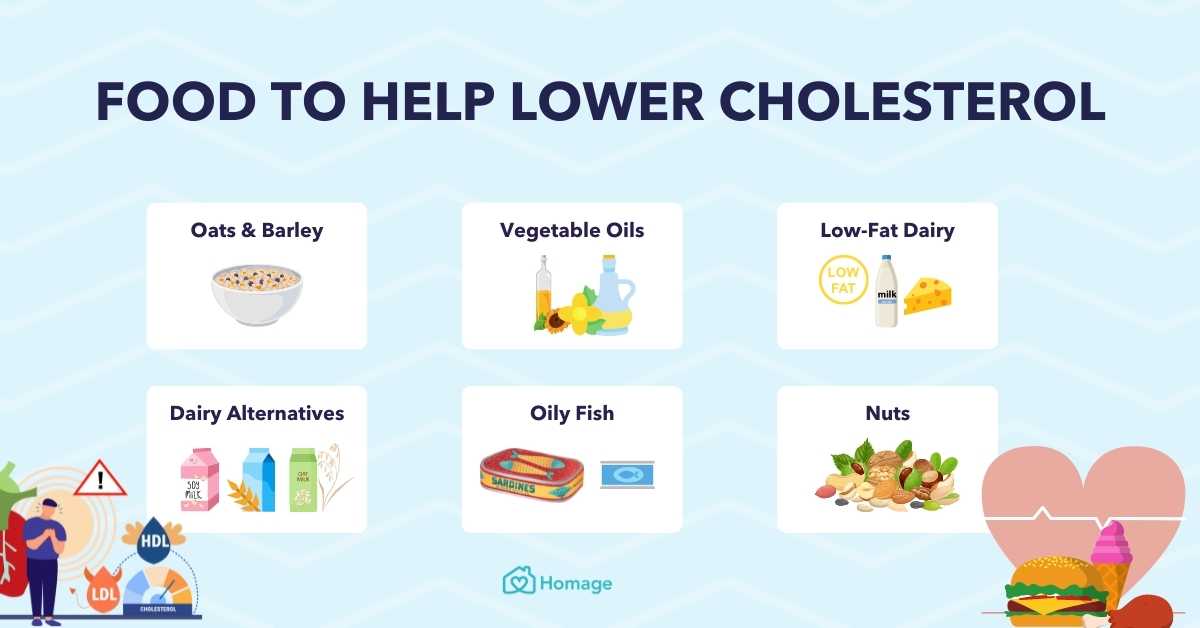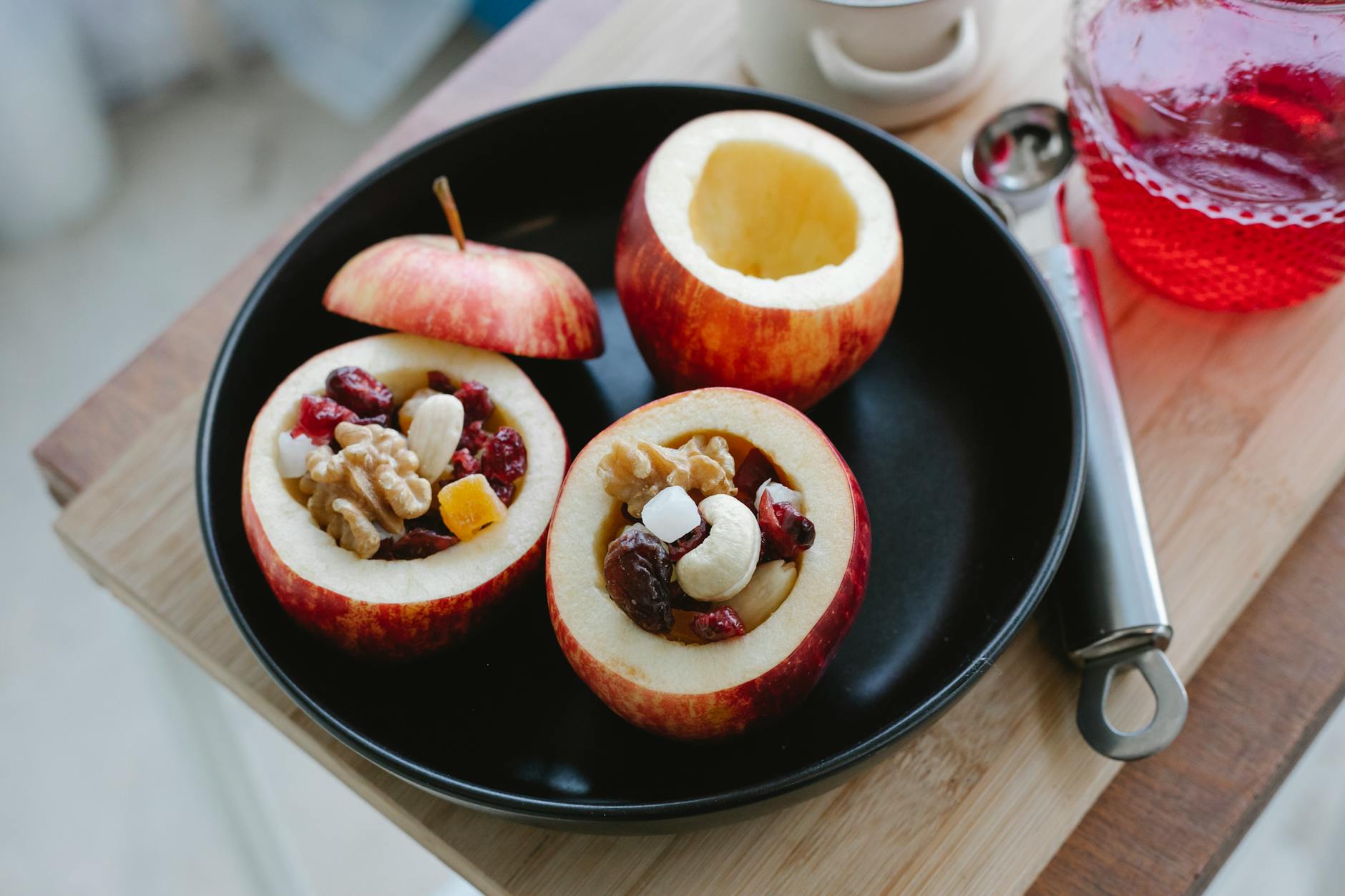Discover the surprising dietary secrets to lowering your LDL cholesterol levels and improving your heart health for good.
Table of Contents
- Introduction: Battling Bad Cholesterol
- What is LDL Cholesterol?
- Identifying High Cholesterol
- Foods to the Rescue
- Dangerous Diets
- Exercise and Activity
- Tips for a Cholesterol-Friendly Diet
- Help from Family and Friends
- Conclusion: Smart Choices for a Healthy Future
- FAQs: Questions Kids Ask About Cholesterol
Introduction: Battling Bad Cholesterol
Cholesterol is an essential substance in our bodies that helps with various functions, like building cell walls and making hormones. But not all cholesterol is the same. Today, we’ll talk about a type of cholesterol called LDL cholesterol, often known as the “bad” cholesterol that we need to keep in check, especially when not managed properly.
LDL cholesterol plays a crucial role in transporting fats throughout the body, but when there is too much of it, it can build up in our arteries, causing blockages and leading to heart problems. This is why it’s vital to understand how to battle bad cholesterol and maintain a healthy balance for a happy and active life!
What is LDL Cholesterol?
LDL cholesterol is one of the types of cholesterol that can be found in our bodies. Cholesterol is like a fat that is necessary for building cells and hormones. However, having too much LDL cholesterol can be harmful.
The Cholesterol Family
There are two types of cholesterol: HDL (good) and LDL (bad). HDL cholesterol helps to clean up the LDL cholesterol from our bodies. But when there is too much LDL cholesterol, it can build up in our arteries and cause problems.
Why High LDL Is a Problem
When there is too much LDL cholesterol in our bodies, it can stick to the walls of our arteries and form plaques. These plaques can make our arteries narrow and cause problems with our heart, like heart attacks or strokes.
Identifying High Cholesterol
High cholesterol is something that we need to keep an eye on because it can cause problems for our bodies. But how do we know if we have high cholesterol? Let’s take a look at some signs that may suggest that our cholesterol levels are too high.

Image courtesy of nutritioneducationstore.com · In stock via Google Images
Signs of Trouble
When it comes to high cholesterol, there may not always be obvious signs that tell us something is wrong. However, there are a few things that can sometimes indicate that our cholesterol levels are high. For example, if someone in our family has high cholesterol, we may be more likely to have it too. Additionally, if we have certain health conditions like diabetes, we may also be at risk for high cholesterol.
Another clue that we might have high cholesterol is if we’re feeling unhealthy in other ways. This could be things like chest pain or trouble breathing, which are signs that our heart might not be working as well as it should. If we notice anything unusual like this, it’s essential to talk to our parents or a doctor about it.
Foods to the Rescue
When it comes to battling bad cholesterol, one of the best allies you have is your diet. Eating the right foods can help lower your LDL cholesterol, keeping your heart healthy and your body strong. Let’s talk about how certain foods, especially those rich in omega 3, can come to your rescue.
The Cholesterol Family
To understand how foods can help lower bad cholesterol, we first need to know that there are different types of cholesterol. There’s good cholesterol called HDL and bad cholesterol known as LDL. Omega 3-rich foods can combat the bad cholesterol and keep it from causing trouble in your body.
Why High LDL Is a Problem
High LDL cholesterol can be a sneaky foe. It can build up in your blood vessels over time and clog them up, making it harder for your heart to pump blood around your body. By eating foods with omega 3, you can help your body fight against this build-up and keep your heart healthy and strong.
Dangerous Diets
When it comes to managing cholesterol levels, what you eat plays a crucial role. Some diets can be harmful and lead to issues like a fatty liver, which is closely related to high cholesterol.

Image courtesy of www.pinterest.com via Google Images
The Risks of a Fatty Liver
A fatty liver occurs when too much fat builds up in the liver cells. This can happen if you consume too much unhealthy food, like sugary snacks and fried treats. When your liver gets overloaded with fat, it can cause problems in how it functions, which can then impact your cholesterol levels.
Choosing The Right Foods
It’s important to avoid diets high in saturated fats and sugars as they can lead to a fatty liver and, ultimately, high cholesterol. Instead, opt for a variety of healthy foods like fruits, vegetables, whole grains, and lean proteins to keep your cholesterol in check.
Exercise and Activity
Being active and engaging in regular exercise are essential for managing cholesterol levels in our bodies. When we move our bodies, it helps to keep our hearts healthy and our blood vessels clear.
The Benefits of Moving
Exercise can help raise our good cholesterol (HDL) and lower our bad cholesterol (LDL). This means that by being active, we are helping our bodies fight against the harmful effects of high cholesterol.
Finding Fun Ways to Stay Active
There are plenty of ways to get active that are enjoyable and can fit into your daily routine. You could play sports, ride a bike, dance, or even just take a walk with your family or friends. The key is to find activities that you love doing so that staying active becomes a fun part of your day!
Understanding Related Problems
When we talk about high cholesterol, it’s not just about having too much of a certain fat in your blood. High cholesterol can lead to a chain reaction of other health problems that we want to avoid. Let’s take a look at how some of these problems are connected and why it’s essential to keep our cholesterol levels in check.
How Sugar Links to Fat
Sugar and fat may seem like two very different things, but they are more connected than you might think. When we consume too much sugar, our bodies can turn it into fat, which can then lead to high cholesterol levels. Over time, this can increase the risk of developing type 2 diabetes, a condition where your body struggles to manage sugar properly. So, by watching our sugar intake and keeping our cholesterol normal, we can prevent problems like type 2 diabetes from occurring.
Body Pains and Heart Strains
High cholesterol doesn’t just affect our blood vessels and heart, it can also have a ripple effect on other parts of our body. While it’s not direct, having high cholesterol has been linked to issues like lower back pain. This is because high cholesterol can contribute to inflammation in the body, which can lead to pain in various areas. By keeping our cholesterol levels in check, we can help reduce the risk of experiencing these uncomfortable body pains and strains.
Tips for a Cholesterol-Friendly Diet
Improving your cholesterol levels can be as simple as making a few changes to your diet. By choosing the right foods, you can help lower your LDL cholesterol and keep your heart healthy. Here are some tips to guide you:
| Diet Tip | Description |
|---|---|
| Eat More Soluble Fiber | Include foods like oats, fruits, vegetables, and legumes in your diet to help lower LDL cholesterol levels. |
| Choose Healthy Fats | Avoid trans fats and limit saturated fats. Opt for unsaturated fats found in avocados, nuts, and olive oil. |
| Limit Red Meat and Full-Fat Dairy | Reduce intake of high-cholesterol foods like red meat and full-fat dairy products to lower LDL levels. |
| Eat More Omega-3 Fatty Acids | Incorporate sources of omega-3 fatty acids such as fatty fish, flaxseeds, and walnuts into your diet for heart health. |
| Watch Portion Sizes | Control portion sizes to prevent overeating, which can lead to weight gain and high cholesterol levels. |

Image courtesy of online.visual-paradigm.com via Google Images
Avoid Fatty Foods
Foods high in saturated and trans fats can raise your LDL cholesterol levels. Try to steer clear of fried foods, processed snacks, and creamy desserts. Opt for healthier cooking methods like baking or grilling instead.
Include Omega-3 Rich Foods
Omega-3 fatty acids are known to help lower bad cholesterol and reduce inflammation in the body. Include foods like fatty fish (salmon, mackerel, sardines), chia seeds, flaxseeds, and walnuts in your diet to reap the benefits.
Load Up on Fiber
Fiber-rich foods like fruits, vegetables, whole grains, and legumes can help lower cholesterol levels. They can also keep you feeling full and satisfied, making it easier to maintain a healthy weight.
Limit Sugary Treats
Excessive sugar intake can contribute to weight gain and raise your cholesterol levels. Cut back on sugary treats like candies, cookies, and sugary drinks. Instead, opt for natural sources of sweetness like fresh fruits.
Stay Hydrated
Drinking plenty of water throughout the day can help flush out toxins and keep your body functioning optimally. Aim to drink at least 8-10 glasses of water daily to support your overall health.
By making smart choices in your diet, you can improve your cholesterol levels and support your heart health for years to come.
Help from Family and Friends
It’s important to remember that you’re not alone in trying to manage your cholesterol levels. Your family and friends can be a great source of support and encouragement on your journey to better health.
Support System
Having people around you who understand the importance of making healthy choices can make a big difference. They can help you stay motivated and remind you to make smart food choices. Whether it’s your parents, siblings, or friends, having a support system can help you stay on track.
Healthy Habits Together
Why not involve your family in creating a healthier lifestyle for everyone? You can cook nutritious meals together, go for walks or bike rides, or even join a sports team as a family. This way, everyone can benefit from a cholesterol-friendly diet and active lifestyle.
Setting Goals
Your family and friends can help you set goals and celebrate your achievements along the way. Whether it’s lowering your LDL cholesterol levels or improving your overall health, having loved ones by your side can make the journey more enjoyable.
Conclusion: Smart Choices for a Healthy Future
As we’ve learned, taking care of our bodies by making smart choices in what we eat and how active we are can make a big difference in managing our LDL cholesterol levels. Remember, LDL cholesterol is the bad kind that can cause problems for our hearts if it gets too high. But by being mindful of what we put into our bodies and staying active, we can keep our cholesterol in check and stay healthy.

Image courtesy of www.homage.com.my via Google Images
Importance of Diet and Lifestyle
What we eat plays a crucial role in how much LDL cholesterol our bodies have. Choosing foods that are rich in omega 3, like fish, can help lower our bad cholesterol levels. On the other hand, diets high in unhealthy fats can lead to problems like fatty liver, which is linked to high cholesterol. Making simple swaps in our daily meals can make a big impact on our health.
Staying Active
Exercise and physical activity are not only great for our overall health but also for managing our cholesterol levels. Being active helps our bodies keep a healthy balance of good and bad cholesterol, reducing the risk of heart issues in the future. So, remember to get moving every day to keep your heart in top shape!
Preventing Related Health Problems
High cholesterol isn’t just about our hearts – it can also be linked to other health issues like type 2 diabetes and lower back pain. By keeping our cholesterol levels under control, we can reduce the risk of developing these problems in the future. Making good choices now can set us up for a healthier future.
By making small changes to our diets, staying active, and keeping an eye on our cholesterol levels, we can set ourselves up for a healthy future. Remember, it’s never too early to start taking care of our bodies and making choices that will keep us feeling our best. Here’s to healthy habits and a bright future ahead!
FAQs: Questions Kids Ask About Cholesterol
Can Kids Get High Cholesterol Too?
Yes, kids can also have high cholesterol. While it’s more common in adults, some children may have high cholesterol levels, especially if they have a family history of it. It’s essential for kids to eat healthy and stay active to keep their cholesterol in check.
Are Burgers and Fries Always Bad?
Burgers and fries are a fun treat once in a while, but eating them all the time isn’t great for your health. These types of fast food can be high in unhealthy fats that can raise your cholesterol levels. It’s best to enjoy them in moderation and balance them with healthier food choices like fruits and vegetables.
How Do Fish Help Fight Cholesterol?
Fish, like salmon and tuna, are packed with omega-3 fatty acids, which are super good for your heart. Omega-3 helps lower the bad cholesterol in your body, making it easier for your heart to stay healthy. So, including fish in your diet a few times a week can be a tasty way to help fight off high cholesterol!





